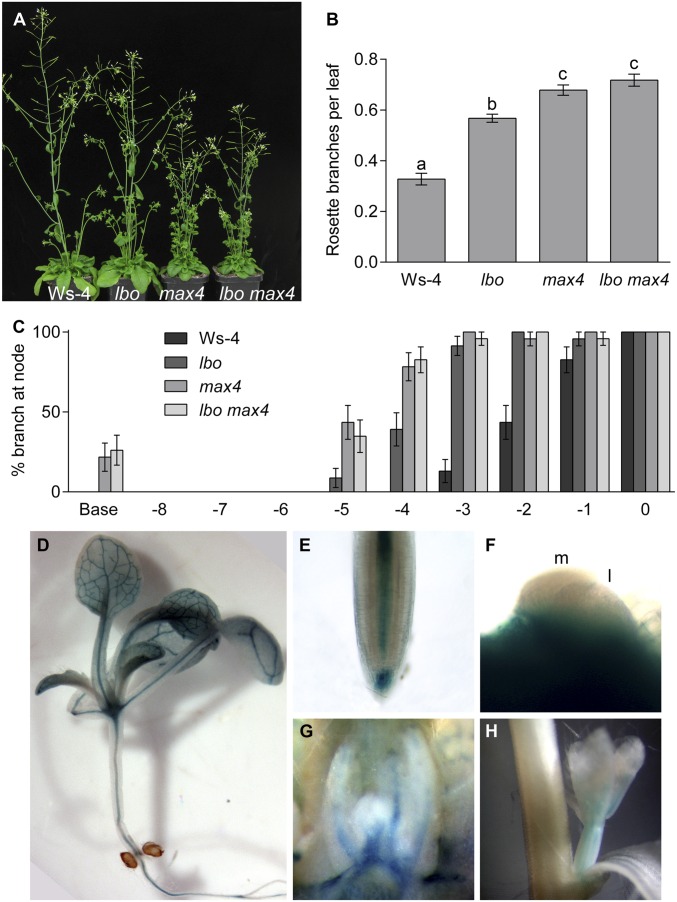Fig. 3.
Mutant phenotype and reporter gene expression of LBO. (A) The lbo-1 mutant shoot branching phenotype was intermediate between those of max4-9 and the Ws-4 WT. The lbo-1 max4-9 double mutant appeared most similar to max4-9. (B) These relationships were reflected in the average number of branches (>5 mm) per rosette leaf. Values with different letters are significantly different from each other (P < 0.05; t test). Mean ± SEM (n = 23–24). (C) Careful examination of the occurrence of a branch in each leaf axil (node) was carried out, with the highest rosette node denoted as zero, counting backward down the rosette. This analysis revealed extra branching in the middle rosette nodes in max4-9 and lbo-1 max4-9 plants and mainly the upper middle nodes in lbo-1 compared with in the WT (Ws-4). Occasionally, branches were seen at the extreme base of the rosette, but it was not possible to determine the precise location. (D) To further characterize LBO, we generated a pLBO::GUS construct using 1,711 bp of the promoter and examined expression in whole-mount samples (Col-0). Representative lines showed GUS expression in the vasculature throughout the plant. (E) Expression extended into the stele of the root tip and was also seen in the root cap and weakly in the epidermis. (F) The meristem (m) and tiny leaves (l) of repressed buds from lower nodes did not show expression (although high expression occurred in leaf vasculature just below these tissues). (G) Larger repressed buds of higher nodes showed expression in the vasculature that reaches up into the four or five immature leaves/flowers. (H) In the inflorescence bolt, most GUS expression was observed specifically in the vasculature of cauline branches and not in the main stem.

